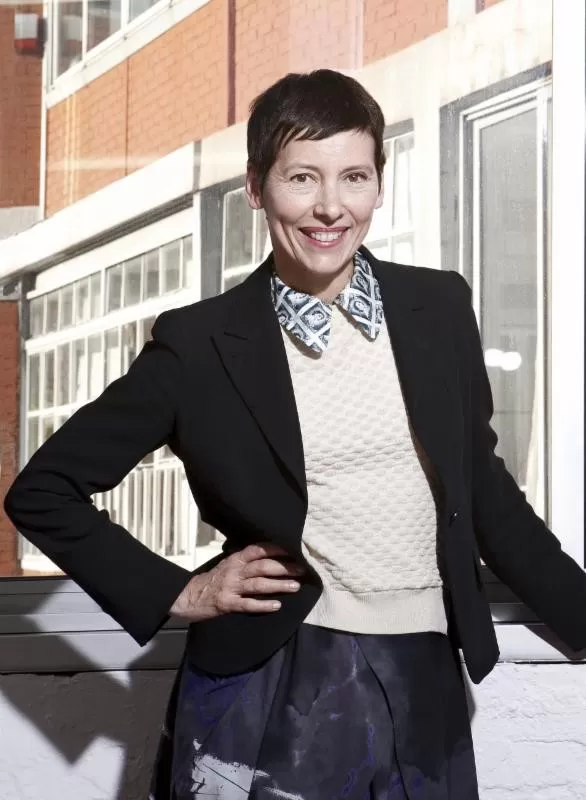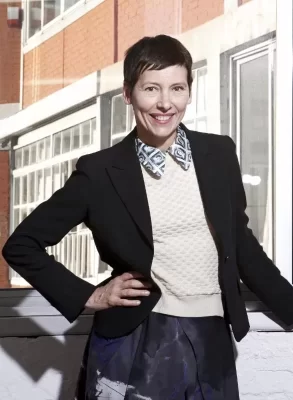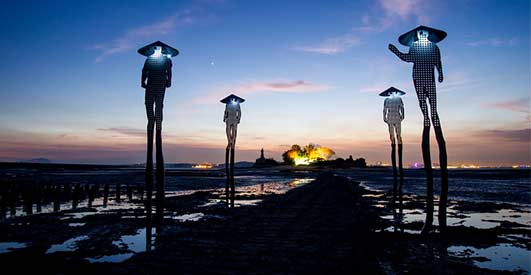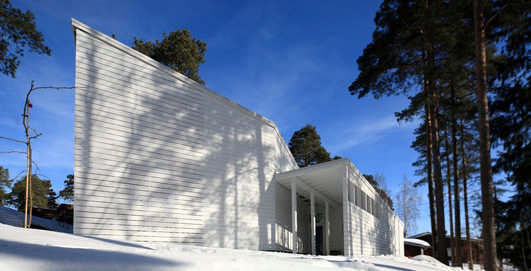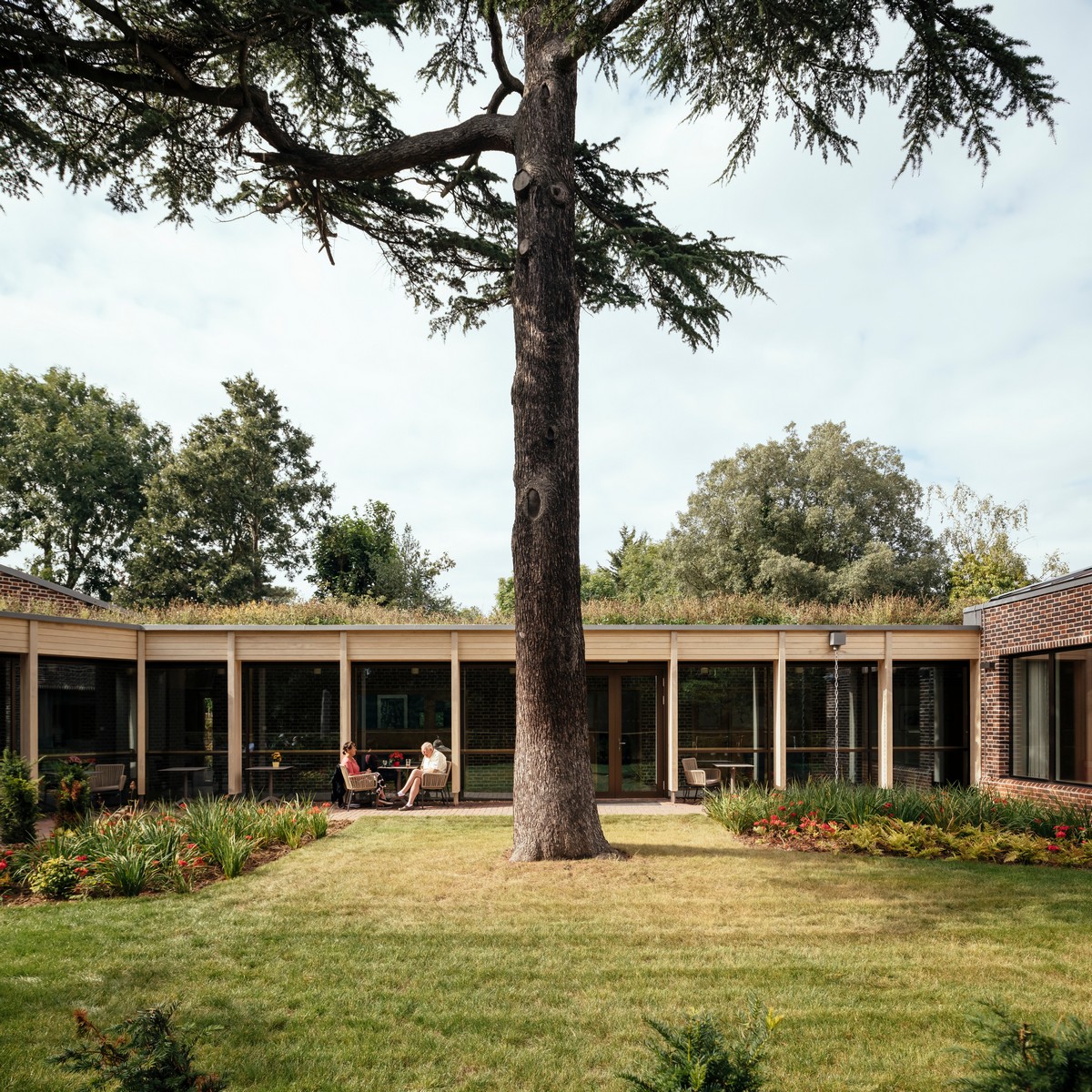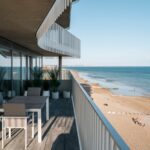European Prize for Architecture 2013, Winner, Architect, Prize, Casagrande Laboratory, WEAK!
The European Prize for Architecture
Architectural Awards – 2013 Winner : Marco Casagrande of C-Lab + WEAK!
1 Sep 2017
2017 Laureate of The European Prize for Architecture
European Prize for Architecture 2017
Manuelle Gautrand wins Europe’s Highest Award for Architecture by The European Centre for Architecture Art Design and Urban Studies and The Chicago Athenaeum: Museum of Architecture and Design
2017 Laureate of The European Prize for Architecture
11 Sep 2013
The European Prize for Architecture 2013
The European Prize for Architecture Winner in 2013
FINNISH ARCHITECT MARCO CASAGRANDE WINS
EUROPEAN PRIZE FOR ARCHITECTURE
e-architect congratulate our friend and inspiration – well done Marco.
Marco Casagrande at Shenzhen Biennial:
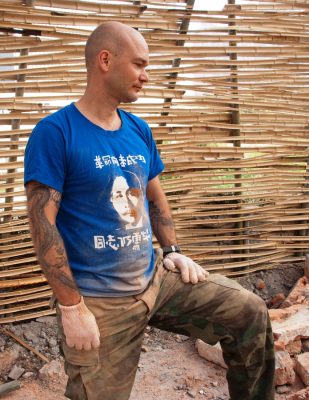
photo from Marco Casagrande
Europe’s Highest Architecture Award to be Presented at the 14th International Biennial of Architecture in Buenos Aires
Marco Casagrande, the Finnish architect, environmental artist, urban philosopher, architectural theorist, writer, and professor of architecture has been named as the recipient for the 2013 European Prize for Architecture.
Since 2003, he is the Principal of the Casagrande Laboratory in Helsinki, Finland and WEAK! together with Hsieh Ying-Chun and Roan Ching-Yueh in Taipei, Taiwan.
The nomination and the award confirm The European Prize for Architecture’s direction in supporting those influential European architects who are blazoning a more humanist and social-based architecture and recognizing their pursuits and their achievements before a European and world audience.
C-Lab : projects
The Prize is given to rare architects who have demonstrated a significant contribution to humanity and to the built environment through the art of architecture.
The European Prize is given every year as a collaborative effort between The Chicago Athenaeum: Museum of Architecture and Design and The European Centre for Architecture Art Design and Urban Studies.
Previous Laureates of The European Prize for Architecture include: The Danish architect, Bjarke Ingels (2010); the German architects, Graft Architekten (2011); and the Norwegian firm, TYIN tegnestue Architects (2012).
A formal ceremony for what has come to be known throughout the world as European architecture’s highest honor will be held in Buenos Aires, Argentina during the 14th International Biennial of Architecture Buenos Aires September 24-27, 2013.
The Mayor of Buenos Aires, Mauricio Macri, is scheduled to officially present this year’s Prize at an official dinner at the Biennale under the auspices of the Ministry of Culture of the City of Buenos Aires and attended by the Jukka Siukosaari, Finnish Ambassador to Argentina, as well as several hundred architects from Europe, Asia, and North and Latin America and international press.
Casagrande’s cross-over architectural work encompasses the realms of architecture, urban and environmental planning, environmental art, and other artistic disciplines.
His is a much broader vision of the built human environment tied into social drama and environmental awareness. According to this architect: “There is no other reality than nature.”
“Casagrande is one of Europe’s new young breed of architects,” states Christian Narkiewicz-Laine, the Finnish Museum President of The Chicago Athenaeum,” who have expanded the traditional boundaries of architecture, pushing that envelope beyond ‘accepted norms’ and the ‘standard perimeters’ of design practice, to include architecture as environmental art and sculpture, while embracing sustainability, humanism, and the public’s right to an appropriate architecture and urban design that reflects and respects human values, dignity, and sel-self-esteem.”
“Casagrande is a model for today’s young design professional of what an architect should be: visionary, aesthetic, intellectual, and socially responsible.”
“He is a writer, theorist, urban philosopher, thinker, expounder, enfant terrible; and often times, he builds with his own hands or enlists an entire community to take up the hammer and the nails.”
“There is no concern for a corporate bottom-line or prevailing architectural style. Like Frank Lloyd Wright or Louis H. Sullivan, he is a pure architect, pure visionary, pure seer, and pure futurist, void of any self-limits.”
“In Casagrande, there is no restraint or sense of timidity, only the astuteness for total, unrestrained creative thinking, which is refreshing in today’s stagnant professional climate. He is what every architect wants to be, but too conservative to really become.” “In one of Casagrande’s most daring art-nature environmental installations, the architect sees himself parachuting from an airplane in a free-fall while sowing seeds on the ground below.”
“I am sure,” states Mr. Narkiewicz-Laine, “that this globally recognized European Prize to Casagrande will appropriately shake and rattle Finland’s rather stayed and safe architecture establishment. Did I say: constipated?”
Mercenary Architect
Casagrande was born in Turku, Finland to a well-off Finnish-Italian Catholic family from the circus world. He graduated from Helsinki University of Technology’s Department of Architecture in 2001.
After his service in the Finnish Army in 1993, Casagrande volunteered for the Bosnian Croat Defense Forces HVO.
Under the pen name “Luca Moconesi, “ he wrote a controversial book entitled: Hitchhikers on the Road to Mostar, which was published in Finland by WSOY in 1997. The book chronicles his experiences in the Bosnian Civil War and is based as an autobiography for which the major protagonist (him) commits war crimes against humanity.
Casagrande’s effort here was to expose the vulgarity and irony of these senseless contemporary European atrocities as those seen in the Bosnian War. In his book, he expressed his views condemning war crimes: “Those troops know that they are doing wrong. This is the very opposite of constructive collectivity and group spirit. Anybody can understand that it is by no measures militarily efficient to go kicking the doors of an old person’s home.”
From the early stages of his career, Casagrande started to mix architecture with other disciplines of art and science landing with a series of ecologically conscious architectural installations around the world.
In 1999, he was a finalist in Architectural Review’s “Emerging Architecture” competition. In 2000, he and his then partner Sami Rintala were invited to the Venice Biennial.
Entitled, “60 Minute Man,” Casagrande & Rintala planted an oak forest in an abandoned barge on top of 60 minutes worth of composted human waste produced by the City of Venice.
Shortly after Venice, in 2003, he completed his Treasure Hill project, a housing area restoration in Taipei, where he changed an illegal settlement of urban farmers into an experimental laboratory of environmental urbanism. Although the overhaul had mixed reactions from the community, he was nominated as the professor of ecological urban planning in the Taiwan based Tamkang University.
Casagrande views cities as complex energy organisms in which different overlapping layers of energy flows are determining the actions of the citizens, as well as the development of the city. By mixing environmentalism and urban design, the architect develops methods of punctual manipulation of the urban energy flows in order to create an ecologically sustainable urban development towards the so-called “Third Generation City” [post industrial city].
This organic machine is kept alive through continuous and spontaneous ruining processes performed by its citizens whom Casagrande refers to as “anarchist gardeners” by means of urban farming, illegal architecture, and urban acupuncture.
The element of “ruin” is viewed as something man-made having become part of nature. The theory is developed in the independent multidisciplinary research centre Ruin Academy (2010-) in Taipei in cooperation with the Aalto University’s SGT Sustainable Global Technologies Centre.
From 1998-2003, Casagrande worked and collaborated with the Finnish architect, Sami Rintala (now Rintala Eggersson Architects, based in Oslo, Norway). The Casagrande & Rintala team produced architectonic installations moving in-between architecture and environmental art.
Casagrande & Rintala Architecture
Casagrande & Rintala installations
Among those projects include:
Land(e)scape (1999) a poetic work that comments on the desertion process of the Finnish countryside. Three of the abandoned barns were driven, as the architects explained, to the point where they have had to break their primeval union with the soil. Desolate, they have risen on their shanks and are swaying towards the cities of the south.
1000 White Flags (2002) used sheets from mental hospitals that were planted down a downhill-skiing range in Koli Nature Park, Finland to draw attention to the madness of businessmen who cut down ancient forests.
Redrum (2003) is an architectonic installation in Anchorage Alaska, commissioned by Alaska Design Forum. In the installation, Alaska Railroad oil tanks re cut into total 12 pieces and turned into a temple structure opposite the Federal Building of Anchorage in the crossing of C-Street and 7th Avenue. The interior is painted bright red in contrast to the rusty and brutal exterior. The floor is made of 3500 kg of oyster shells, the origin of all Alaskan oil.
“Redrum” is “murder” backwards. The designers intended to comment on the connection of oil, war and environment. Local media described the piece as “a slap in the face to Alaskans.”
Potemkin (2003) is a steel-made architectural park in the Kuramata village in Japan. The site is a former illegal dumping ground turned into a riverside park and made out of one-inch thick Kawasaki steel and recycled urban and industrial waste.
Post-Rintala
Human Layer (2004) a series of urban acupuncture plans for the cities of London, Helsinki and Taipei.
Future Pavilion, Taiwan Design Expo (2005) a cross disciplinary art-architecture exhibition in a ruin of Wei Wu Military Camp, Kaoshioung.
CityZenGarden (2006 together with 3RW Architects) is an oriental stone garden made from recycled glass in the Venice prison for the Venice Architecture Biennial.
Chen House (2009) a ruin in the Datun Mountains, Taiwan where the man-made became part of nature.
Bug Dome, WEAK! (2009) an unofficial social club for illegal workers; insect architecture.
Ruin Academy (2010) an independent cross-over architectural research centre in an Urban Core area in Taipei, Taiwan set to re-think the industrial city and the man in the box.
Cicada (2011) an organic bamboo pavilion providing urban acupuncture to the surrounding industrial city in Taipei City, Taiwan.
Sandworm (2012) a willow cathedral for Beaufort04 Triennial of Contemporary Art, Wenduine, Belgium finely tuned to celebrate the site-specific conditions of the Wenduine tidal beaches. The installation is part architecture; part environmental art—the whole piece is made out of willow and uses what is described as “weak architecture.”
‘I want to design shelters in nature for honest people’
In all of Marco Casagrande’s work, there is in search for a subconscious architecture, a real reality, and a connection between modern man and nature. He believes that one shall not be blindfolded by stress, the surroundings of economics, and the online access to entertainment or information. “What is real is valuable.”
His theory of the “Third Generation City” views the post industrial urban condition as a machine ruined by human nature and architects as design shamans merely interpreting what the bigger nature of the shared mind is transmitting.
“Nature inspires me,” states the architect, “including human nature and architectonic beauty. Environmental drama.“
‘This is a thinking architect who is most complex beyond the imprint of normal architectural tradition,” states Kieran Conlon, Director and CEO, The European Centre for Architecture Art Design and Urban Studies.
“We need to applaud such courage to really think outside the box, to embrace every means of expression, and to convey new architectonic meaning to collective sensuous intellect.” “Marco Casagrande has opened the door for uncontrolled architectural creativity and freedom and expression,” states Mr. Conlon
The European Centre for Architecture Art Design and Urban Studies will mount a special exhibition on Marco Casagrande Laboratory during the Buenos Aires Biennial (September 21 through October 13) at Centro Cultural Recoleta, Junín 1930 in Buenos Aires.
After Buenos Aires the exhibition travels to Contemporary Space Athens in Athens, Greece in 2014 and starts a tour throughout Europe.
A monograph on Marco Casagrande on the occasion of the European Prize for Architecture is published by Metropolitan Arts Press and is available through The European Centre.
C-Laboratory : discussions
Key C-Laboratory Projects
Oystermen, Kinmen Island, Taiwan
Design: Marco Casagrande
Oystermen
Apelle : House in Karjaa, south west Finland
Design: Marco Casagrande / C-LAB
House in Karjaa
Sandworm, Wenduine coastline, Belgium
Marco Casagrande / C-Laboratory
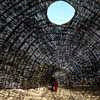
picture : Marco Casagrande
Sandworm –
CICADA – Urban Acupuncture, Taipei City, Taiwan
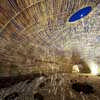
photo : AdDa
CICADA – Urban Acupuncture
Bug Dome, Shenzhen – Hong Kong Biennale
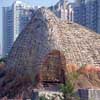
photo © Marco Casagrande
Bug Dome
Chen House, north Taiwan
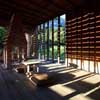
photo : AdDa
Chen House
Public Attic, Helsinki, Finland
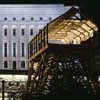
photo : Yehia Eweis
Public Attic
Treasure Hill, Taipei City, Taiwan
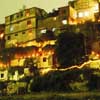
picture from C-Laboratory
Treasure Hill Taipei
1 Oct 2012
The European Prize for Architecture 2012
The European Prize for Architecture Winners in 2012
The Chicago Athenaeum and The European Centre for Architecture Art Design and Urban Studies announce that two young Norwegian architects, Andreas G. Gjertsen and Yashar Hanstad, principals of the architecture cooperative, TYIN tegnestue Architects in Trondheim, Norway, have been named as this year’s winners of The European Prize for Architecture for their humanitarian work designing and building with community participation in poor and underdeveloped areas in Africa and Asia.
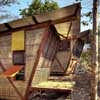
photo : Pasi Aalto / pasiaalto.com
European Prize Architecture 2012
European Prize for Architecture winner in 2012 – TYIN tegnestue Architects
Website: European Prize for Architecture Nominations
Location: Dublin, Ireland
Europe 40 Under 40 Award 2011
Architecture Awards
European Architecture Awards
Europa Nostra Award – winner news
European Copper Architecture Awards
European Architecture Competition : 2nd European Prize for Urban Public Space met in Barcelona
For further information on the European Prize for Architecture, contact The European Centre at info@europeanarch.eu
THE EUROPEAN CENTRE FOR ARCHITECTURE ART DESIGN AND URBAN STUDIES
28 Butler’s Court, Sir John Rogerson Quay Dublin 2 Ireland TEL/FAX +353/(0) 1 6708781
46-48 Vassiliou Megalou GR-118-54 Rouf Athens Greece TEL/FAX +30/210-9413717
Comments / photos for the European Prize for Architecture 2012 page welcome

